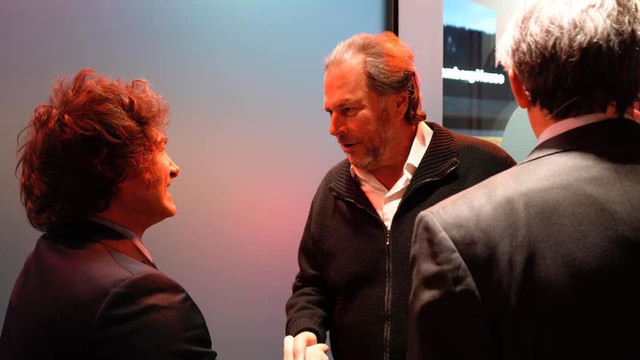Neuroscience for Business: Transforming Teams for an AI-First Company Culture
Neuroscience for business has become a cornerstone in reshaping how teams adapt to AI-first cultures. Over the past two years, we've guided our clients on integrating artificial intelligence into their personal and professional lives to boost efficiency and perform at their highest level. Yet, when it came time to introduce these same practices within our […] The post Neuroscience for Business: Transforming Teams for an AI-First Company Culture appeared first on Vilma Núñez - Consultora Estratégica de Marketing.

Neuroscience for business has become a cornerstone in reshaping how teams adapt to AI-first cultures.
Over the past two years, we've guided our clients on integrating artificial intelligence into their personal and professional lives to boost efficiency and perform at their highest level.
Yet, when it came time to introduce these same practices within our own team, we encountered an unexpected challenge: the team's resistance.
The hesitation wasn't rooted in a lack of interest or capability, but in a deeper fear:
Would AI replace my job? Would there be less work for me, and for that reason, would I be fired?
Building AI-First teams with neuroscience for business
-
Step One: Building neuroplasticity for change
We started by addressing the root of the resistance—the brain's natural difficulty in adapting to new tools and environments.
Leveraging neuroscience for business, we introduced exercises to enhance neuroplasticity.
To empower our team, we brought in a specialist to teach simple techniques designed to improve learning and adaptability.
By developing this mental flexibility, we aimed to integrate AI into daily routines, reducing fear while building confidence.

-
Step Two: Dedicated training with an accountability partner
Next, we launched an exclusive training program tailored to our company's mission, vision, values, and annual goals.
Rooted in neuroscience for business, this program incorporated an “accountability partner” system.
This collaborative approach ensured mutual support, reduced stress, and fostered resilience.
By working together, the team became more engaged and committed to learning new skills.
This turned AI adoption into a shared goal, aligning with the principles of neuroscience for business.
-
Step Three: Sparking innovation through collaboration
Finally, we focused on inspiring innovation. A gamified approach, backed by neuroscience for business, invited pairs of team members to propose ideas for improving efficiency with AI in our company.
The top three submissions received cash prizes and the chance to implement their ideas.
This strategy tapped into collaboration and healthy competition, reinforcing a culture of creativity and progress while strengthening social bonds.
The impact of neuroscience for business on team growth
With these three steps—cultivating neuroplasticity, fostering resilience, and promoting innovation through gamification and collaboration—we're not just integrating AI into our processes.
We are creating an environment where our team feels empowered, supported, and excited about the opportunities AI brings.
By combining the science of the brain, continuous learning, and social connection, we ensure internal growth while accelerating external success.
This approach helps us transition to an AI-first model while keeping our people at the heart of our culture.
By: Vilma Nunez, Ph.D.
If you want to download this case study in PDF, click on this link or on the banner that I share with you below:
You might also be interested in reading this: Is Wearable Technology Enhancing Neuroscience for Business or Manipulating Decision-Making?
The post Neuroscience for Business: Transforming Teams for an AI-First Company Culture appeared first on Vilma Núñez - Consultora Estratégica de Marketing.
What's Your Reaction?


























